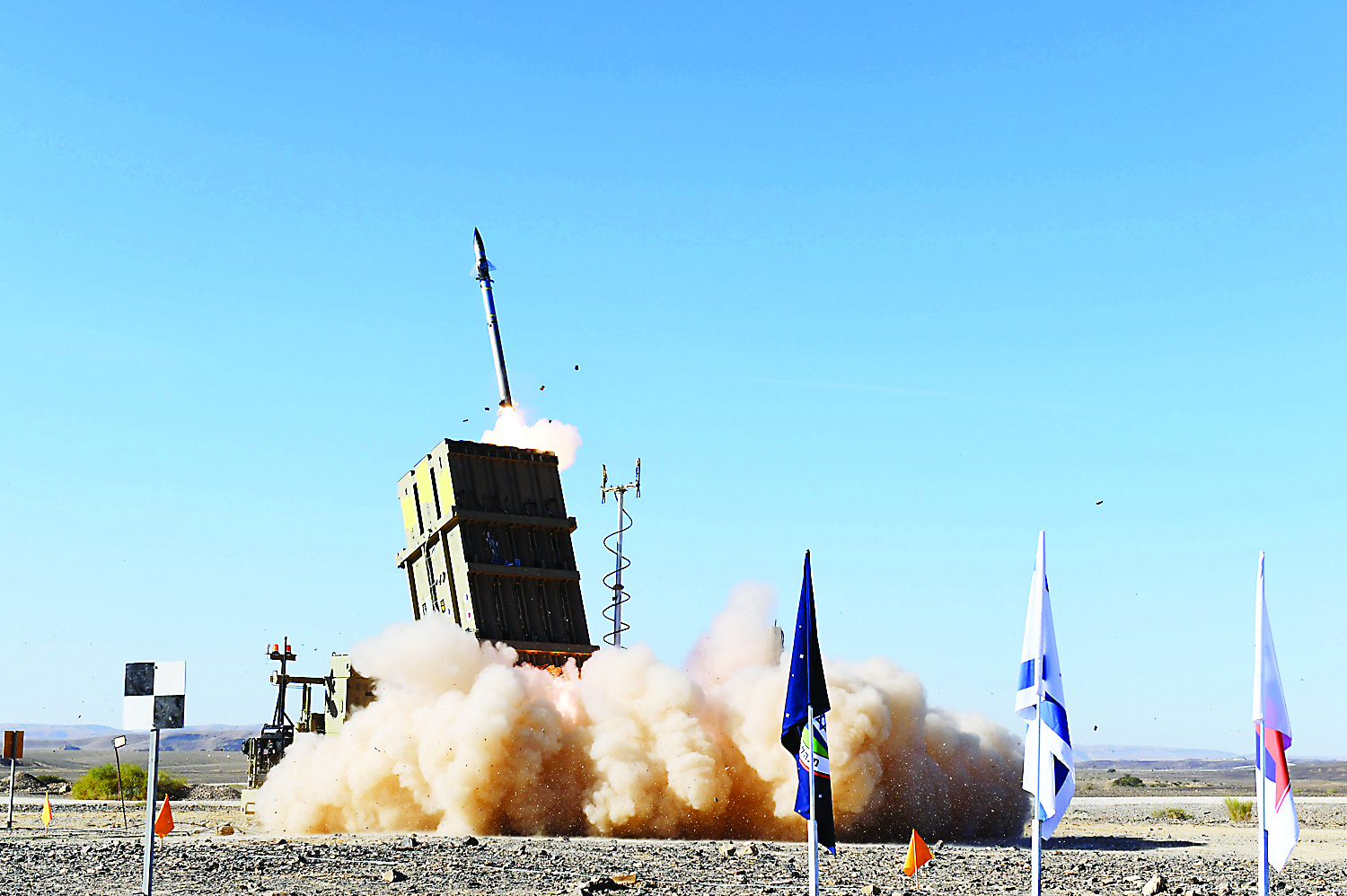click to dowload our latest edition
CLICK HERE TO SUBSCRIBE TO OUR NEWSLETTER


Published
4 years agoon
The Iron Dome missile defence system is a part of Israeli life, especially in the south of the country, where it has shot down thousands of rockets terrorising Israeli civilians. However, few know the story of how this Israeli invention came to be, and how it was long seen as a mission impossible.
This was revealed on an SA Jewish Report webinar, “Iron Dome: The Untold Story of Israel’s Secret Weapon.” Among the panellists were the producer and director of the documentary series, Iron Dome, Nati Dinnar and Uri Bar-On; Iron Dome inventor Chanoch Levin; and Be’er Sheva resident Miriam Green.
“Most people only heard about the Iron Dome after its success. But the story actually started seven years before, and there was a high chance of failure. We talked to more than 100 people who played a role in the story,” said Dinnar. The documentary series is made up of three episodes that can be accessed on the new Israeli streaming platform, IZZY.
The series takes a deep dive into the politics around the invention of such a system, and “tells the story of how Israel works on all levels”, said Dinnar. Bar-On said it was “important to tell the whole story from a personal point of view. We didn’t want it to focus only on the technicalities and engineering, but also on the lives affected by rocket attacks.” He said he shed many tears working on the film and watching it, even after seeing the same scenes a thousand times.
“I visited Sderot many times,” said Levin. “The motivation for us was to look at the children [who were] experiencing rockets every month for 20 years. How would this affect them in future? That was the biggest motivation for me and my team to accelerate the whole project.”
He said that former Sderot mayor and then defence minister from 2006 to 2007, Amir Peretz, was the project’s biggest supporter in the beginning. Peretz had visited children whose father died in a rocket attack, and one son told him he had done nothing to prevent it. While Peretz was torn between an American laser system and “an invention beyond anyone’s imagination”, he eventually signed off on the Iron Dome during his short time in the defence ministry.
But before that, “Almost no one believed we could do it. Not the army, not the government. Even I, who had developed many missiles, thought it was almost impossible,” said Levin. Many supported the use of the American laser system, and saw no point in Israelis wasting time and money to invent something new. Finding funding was a huge challenge, and costs had to be kept low.
“Our first test failed. But then one of my engineers said that maybe the cables weren’t connecting properly. After fixing this, we tested it again, and it worked. When the Iron Dome intercepted that rocket, it was the first time I believed we could do something impossible,” said Levin with a smile. Indeed, a clip from the film shows the tension and anxiety of the test, followed by celebration when it succeeded – a scene reminiscent of a moon landing.
Levin said he realised his son’s remote-control car had many parts that could be used in the Iron Dome, and some of these parts were, indeed, sourced for the invention. “It’s the first missile in the world with parts from Toys “R” Us,” he quipped.
The panellists noted that while President George W Bush chose not to provide funding, it was President Barack Obama who signed off on $80 million (R1.3 billion) for the project. His decision was possibly influenced by his visit to Sderot when he was a presidential candidate. Each Iron Dome battery costs about $100 million (R1.6 million), and each missile within the battery costs $50 000 (R825 716).
The filmmakers spent many hours talking to the families affected. One mother who lost a child in a rocket attack at first refused to be part of the project. But she eventually trusted them, and shared the senseless tragedy of her child’s death. When the film had its small premiere under COVID-19 lockdown, it was held at her house.
They said it was also important to hear the Palestinian side of the conflict, but managed to find only one Palestinian who would go on record. He spoke of how the Iron Dome saves lives on both sides, because fewer Israeli casualties means fewer retaliations.
As a resident of Be’er Sheva, Green described the harrowing realty of living under the threat of rockets. “During Operation Cast Lead, my children slept in our hallway as it had a bit more reinforced concrete than the rest of the house, and we didn’t have a safe room,” she recalls. “During my son’s Barmitzvah, the sirens went off, and we had to usher the whole congregation to safety, including family from overseas. We now joke that ‘we had a blast at Hillel’s Barmitzvah’, but in reality it wasn’t funny.
“Another time, we were stuck outside in the middle of the night on the way to the airport, and we watched the Iron Dome shoot up and destroy rockets. The night was ablaze. Even though it was dangerous, it was amazing to see.” Green was born in London where her parents experienced the Blitz, so her children are the third generation to experience the threat of missiles. She hopes that with the invention of the Iron Dome, they will be the last.
